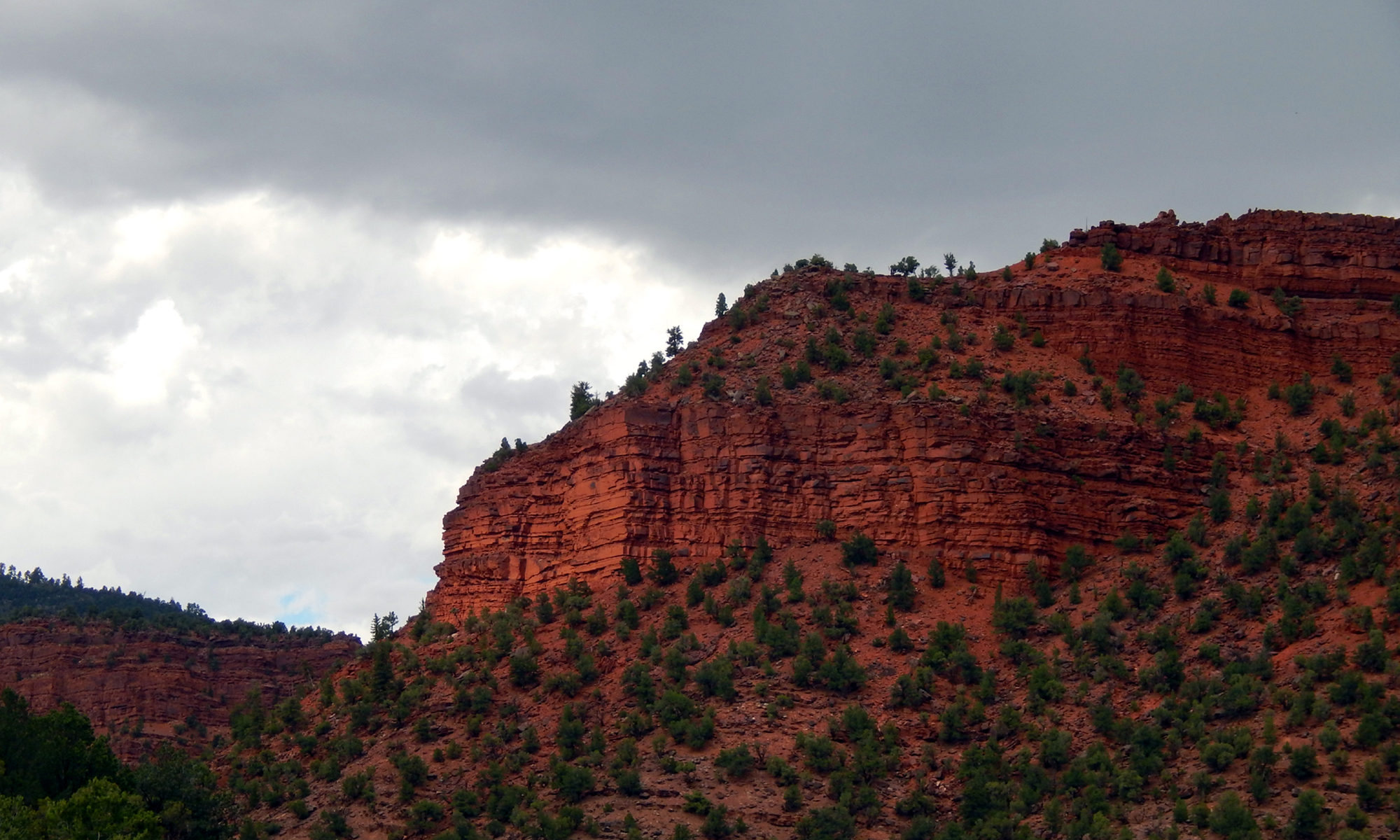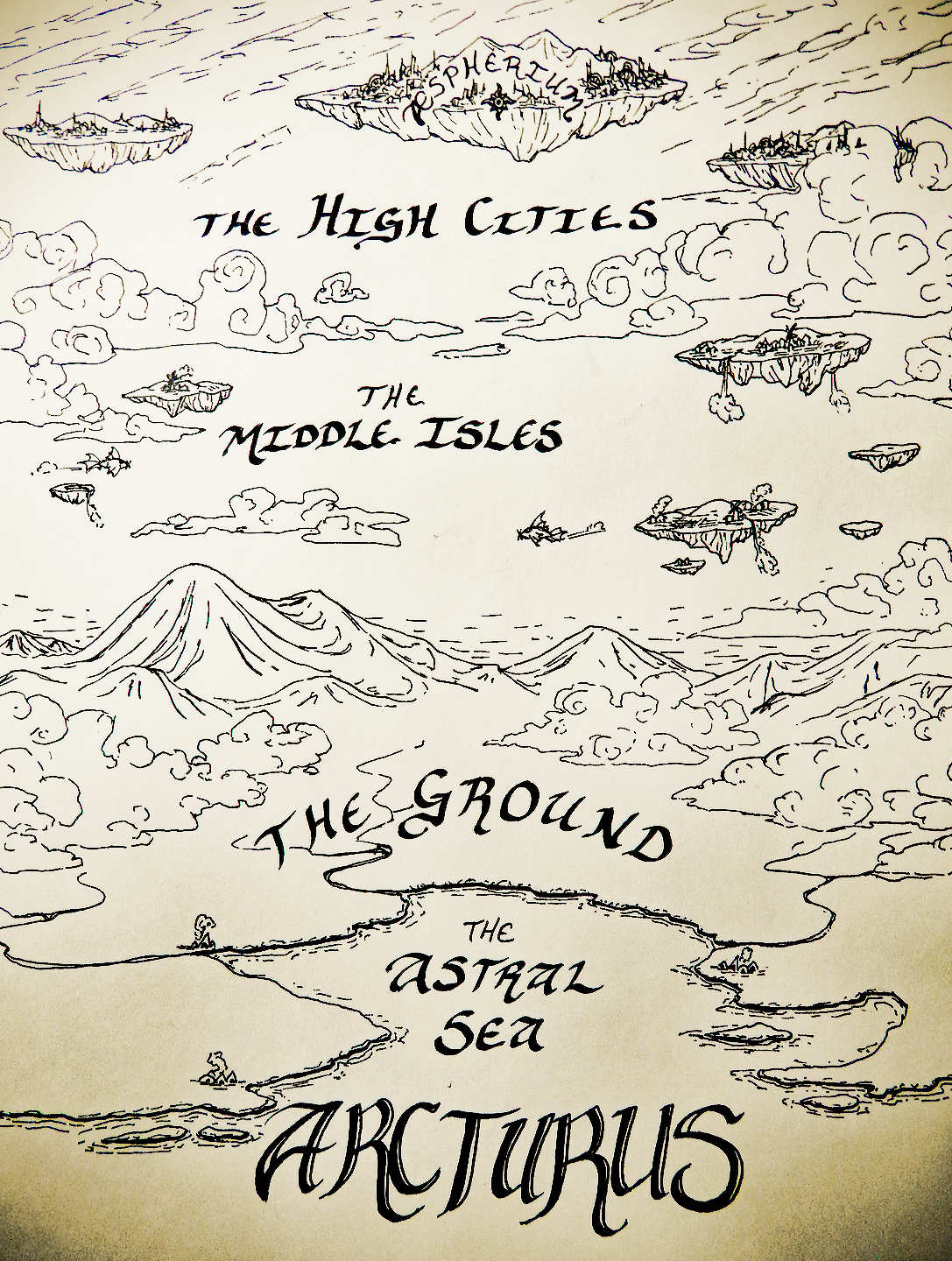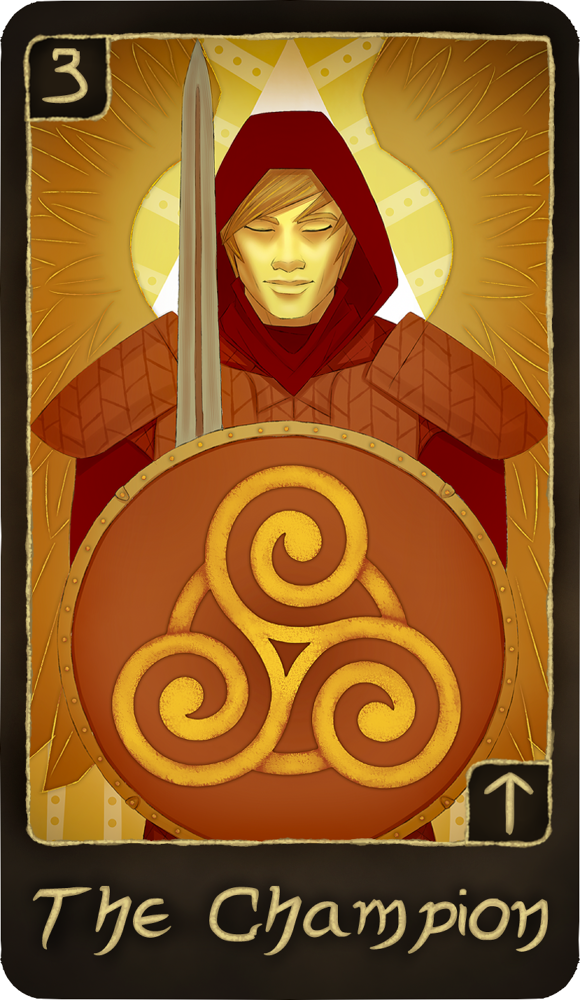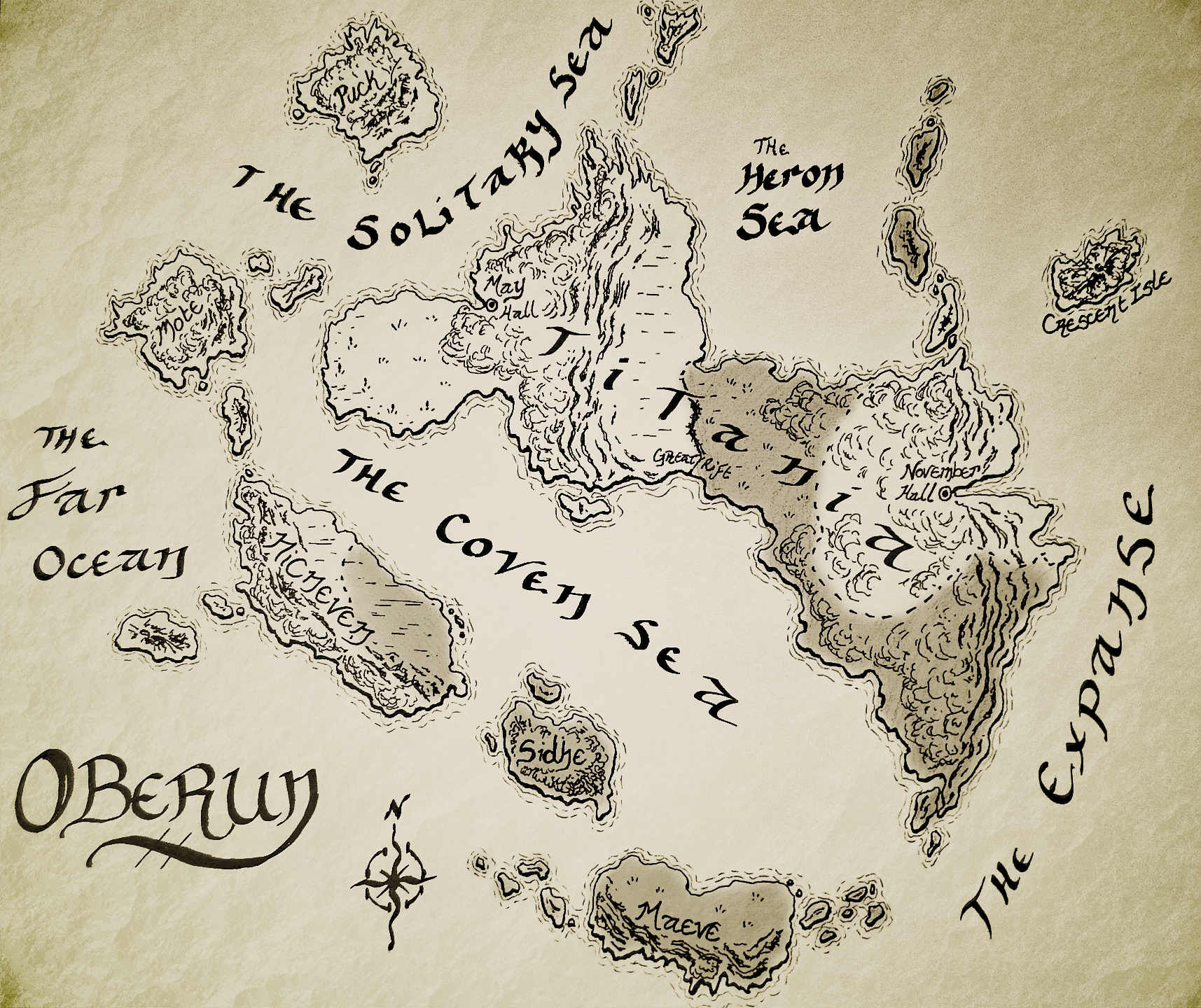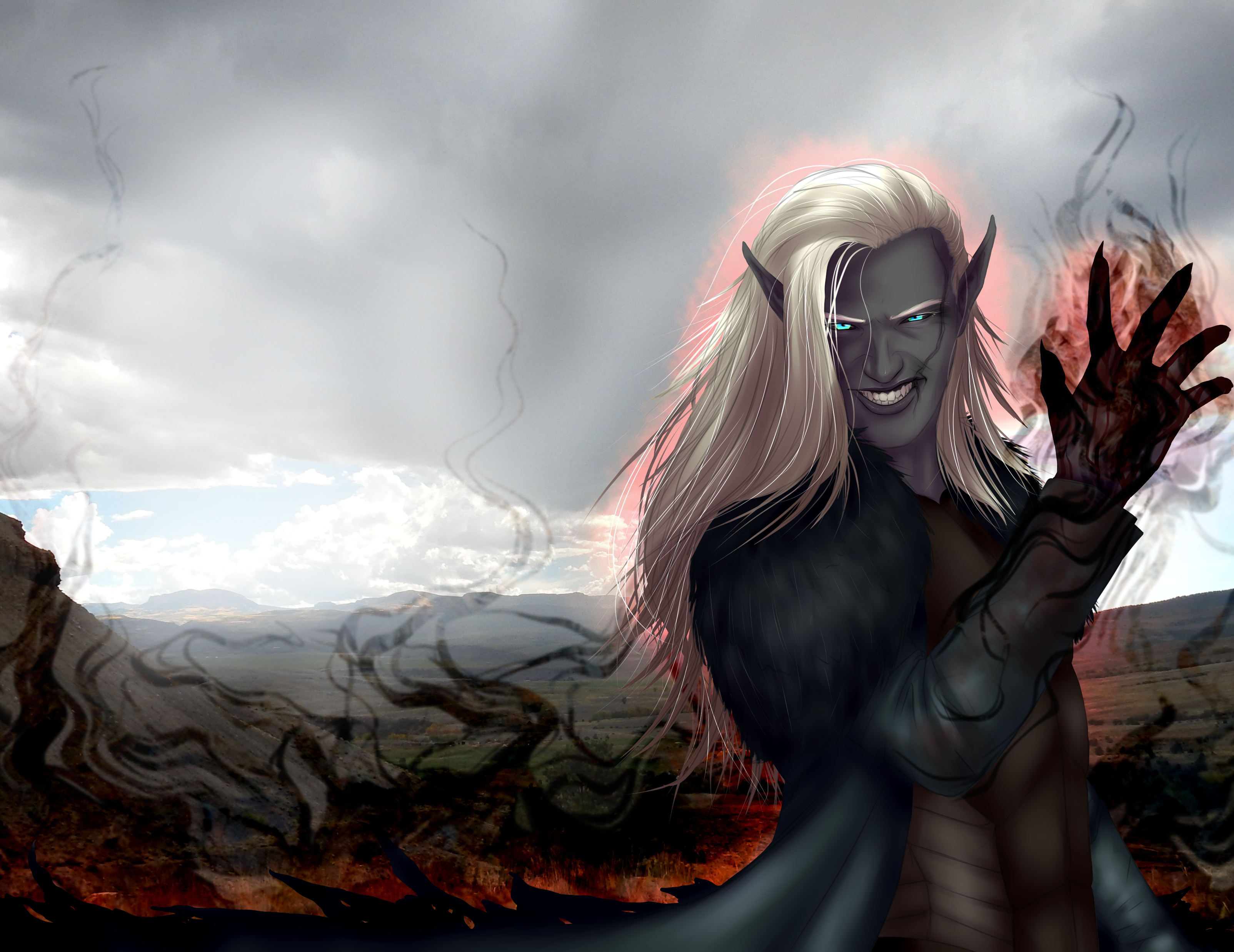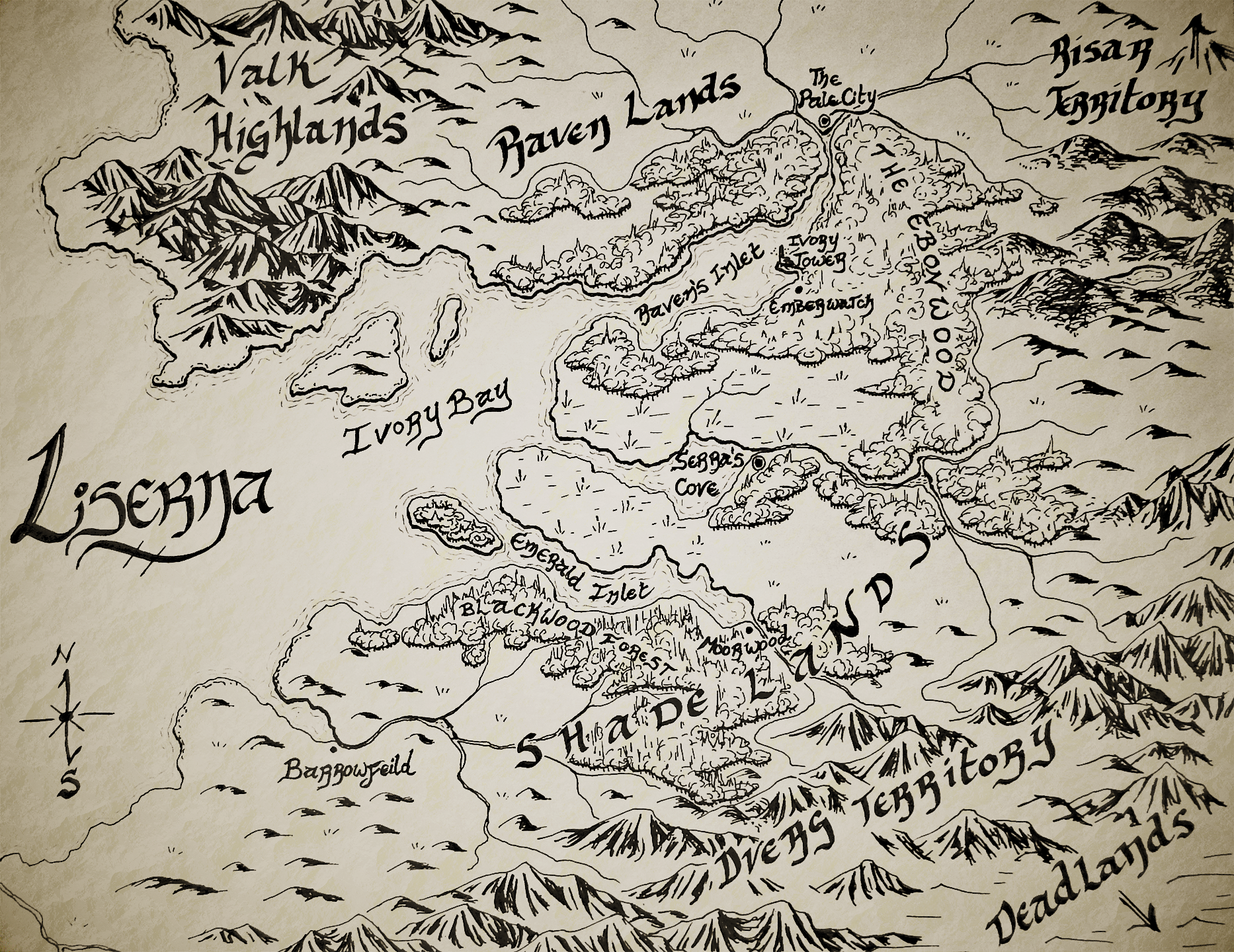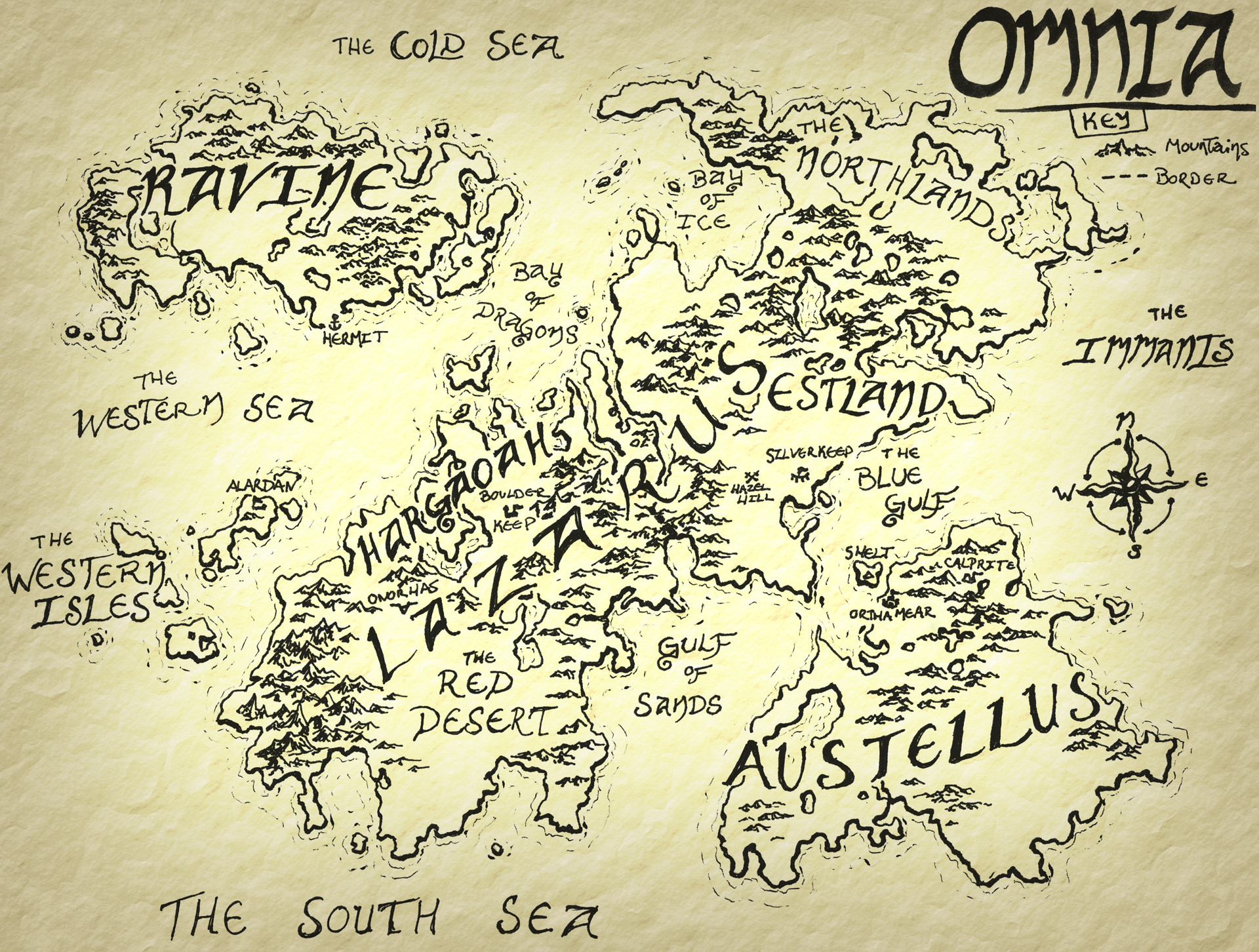
Synopsis
Often called the Dark Realms or the Demon Realms, Senabyss is, by most accounts, a desolate place, full of creatures that don’t belong anywhere else. Unlike Liserna and Oberun, Arcturus and Senabyss aren’t so much harmonic opposites as they are harmonic equals. Beings from either realm can exist in the other, but it takes a great deal of energy and willpower to get from one place to the other. As could be guess by the common names for this Realm, the denizens are collectively called Demons. Two languages are spoken by the Demons, depending on the class they fall into: Infernal, which is the more common tongue, and Abyssal, which is spoken mostly by the Archdemon’s court.
Lands
The main Realm of Senabyss is ever-changing, with tempestuous seas and raging storms stirred by the high levels of volcanism, and massive tidal shifts. The earth is iron-rich and gives the ground a reddish tinge no matter where one looks, but which is especial evident in the vast stretches of desert in the rain-shadows of almost perpetually smoking mountain ranges. Anything living in this Realm is hardy, adaptable, and generally shares a chaotic attitude that mimics the natural order of the plane. The Demons manage to live in a tenuous symbiosis with their surroundings, but most established cultures are focused only on one thing: survival.
However, the main Realm is only one part of the Dark Realms. In the skies of Senabyss, an even more desolate sight can be seen: the remains of a once-glorious domain, a world broken to its core, trailing pieces of itself across the cosmos. It is the pull from this dead world that influences the tides of Senabyss, and many legends exist about it. The Shattered Realm, the Darkest Realm, is rarely discussed, save for being invoked as a manner of speaking. To all conventional knowledge, nothing lives there, and if there are still remnants from the Realm’s former living days… everyone hopes they don’t exist.
Countries
There aren’t so much established countries or kingdoms on Senabyss as there are tribes and clans, sometimes bands with no more organization than an average family group. Most Demons see any kind of order as unnecessary, since it will likely not survive in the harsh environment, anyway. That’s not to say that the people of the Dark Realms are barbaric, in fact they resort to trade more often than bloodshed, much to the surprise of foreigners.
The exception to the rule is the Archdemon’s Court. In one seemingly static, calm place in Senabyss’s otherwise difficult landscape, one Demon rules over a collection of underlings, officers, Knights, and Lords, usually with an iron fist. The first was Tharenor, who created the Realm in the beginning, and after he stepped down, Asmodeus took up the mantle. There have, of course, been various uprisings against whichever Lord of Chaos sits upon the throne, almost all of which ended in the challengers swearing fealty to the Archdemon. However, in recent history, there has been at least one successful revolution, by a Far-born with unusual talent.
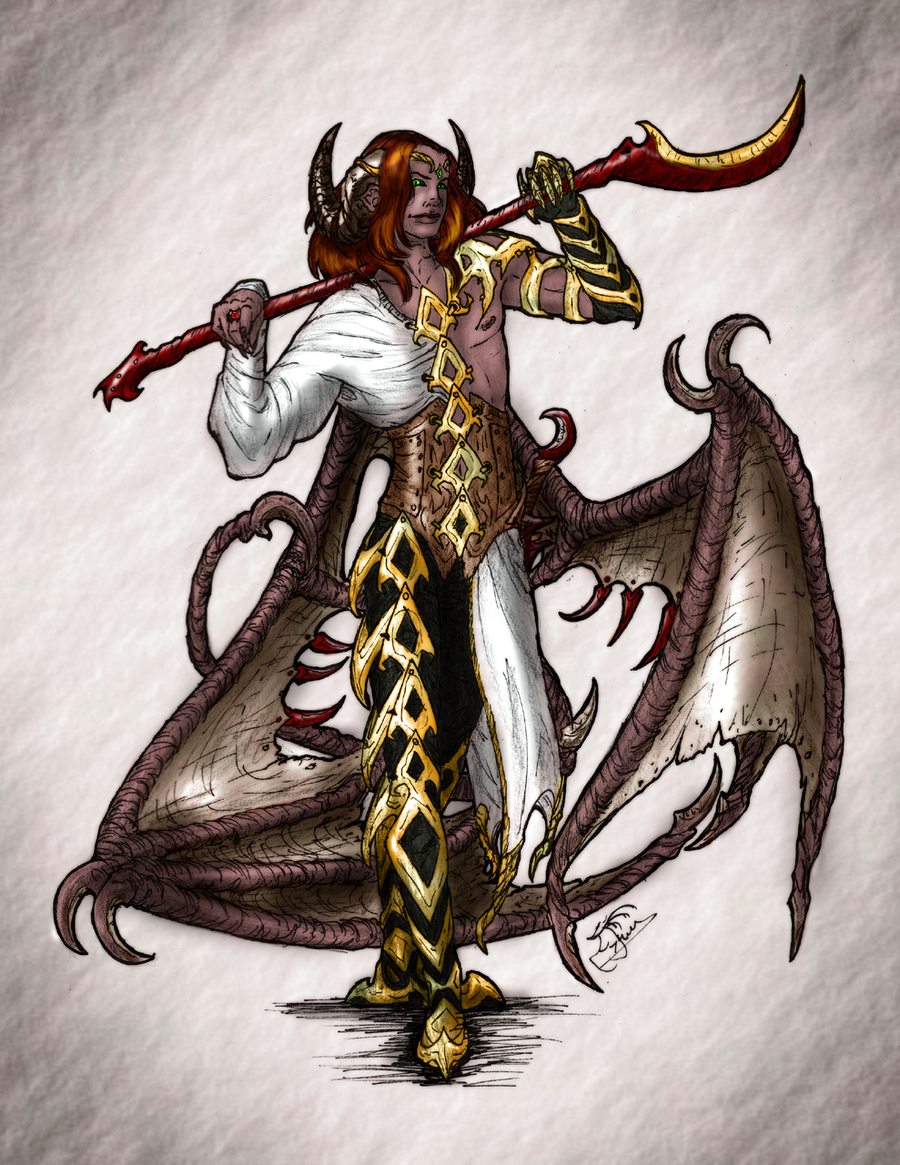
People
The native races of Senabyss are a chaotic, eclectic lot, changed and shaped by the power of the Realm on which they live. They are the most likely to venture out into other worlds, most usually Omnia, simply because they can withstand whatever the relatively peaceful environments can throw at them. Most pure-born Demons are fire resistant, and can withstand intense heat, cold, and toxic conditions. However, nobody knows how long the natural lifespan of a Demon is. For all of their adaptations, most die either from accidents, environmental catastrophes, and each other. The most common types of Demons include Firbolg, Fomorians, Imps, Gargoyles, and Far-born.
- The Firbolg are what most think of when they are asked to imagine a Demon. They are also the most Human looking, and stand around 6 and a half feet tall on average. They possess a wide variety of traits that set them apart, the most common being horns, tails, and scales. Some Firbolg bloodlines also grow wings, or have other abnormalities like several pairs of horns or multiple tails. For as long as Senabyss has existed, the ruler has been a Firbolg, or a Far-born, and as such the Firbolg are the most likely to speak Abyssal.
- Fomorians are large, ox-like humanoids, standing well over 7 feet tall and built to take heavy damage. They have wide jaws and tusk-like fangs, and usually sport at least two pairs of large horns. They usually speak Infernal, because it’s an easier language for them to physically produce, but some have learned Abyssal to be able to conduct business with the Firbolg.
- Imps are gaunt, devious, and the smallest of the Demon races. They stand 4 to 5 feet tall, and have long arms that end in claws. They hunt in packs, teaming up in scores to take down prey or enemies. They aren’t the smartest of all races, and tend to swarm rather than have any manner of tactics. Imps are often employed as mass foot soldiers in Senabyssian armies, sometimes to devastating effect.
- Gargoyles are massive, lumbering brutes that tower over the other Demon races, even without standing up straight. They, like the Imps, have very long arms, but the Gargoyles’ are thick, built more like tree trunks than useful appendages. They walk around on their knuckles, hunched over, and don’t speak much of any language. However, they are intelligent, possibly even more so than the Imps, and know how to use their massive presence to their own advantage. The Gargoyles are on good terms with both the Firbolg and the Fomorians, and are actually the most peaceful race, relatively speaking.
- One of the main ways Demons multiply isn’t by actual reproduction, but by contamination. The Far-born are members of races from other Realms, who have become become so affected by Demonic corruption that they begin to resemble one, themselves. They mostly come from Omnia, since Humans are the most easily affected by any manner of magical change, and while some choose to live out their lives on their home plane, many do flee to Senabyss. Those who master their Demon blood are often looked on with respect by the Firbolg and the Fomorians, and there have even been Far-born Archdemons in recent history.
I hope you all enjoyed this overview of the Dark Realms, and the people who inhabit it. Next week, I have to backtrack a little bit, because there’s a race in Oberun that I missed. Good job, self! Hope to see you then.
– E.J.
